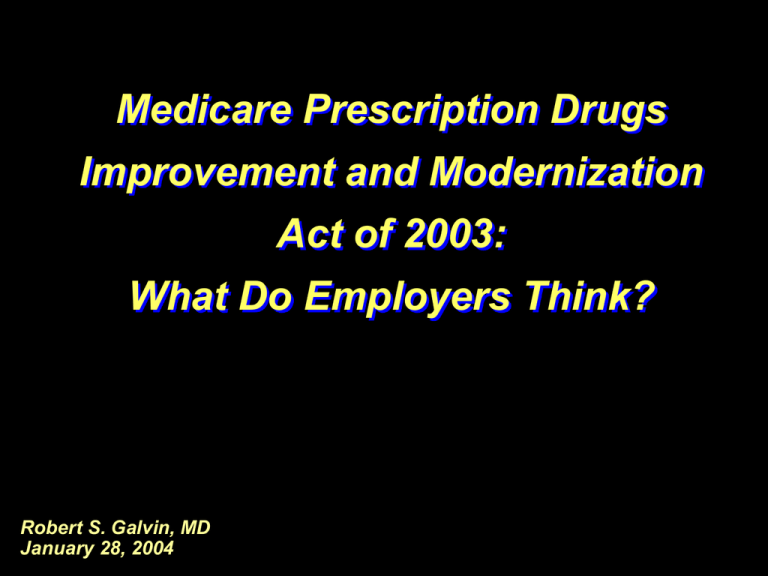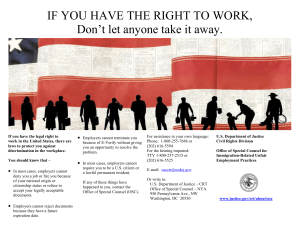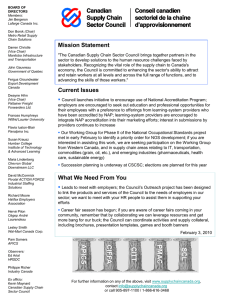Medicare Prescription Drugs Improvement and Modernization Act of 2003: What Do Employers Think?
advertisement

Medicare Prescription Drugs Improvement and Modernization Act of 2003: What Do Employers Think? Robert S. Galvin, MD January 28, 2004 What The Bill Isn’t Perfect 2 What The Bill Is “The Triumph Of Experience Over Hope” Apologies to Samuel Johnson • Government Can Act on Health Care • Employers Included in Dialogue • Favors Competitive / Market Approach . . . But With Safety Net • Pushes Transparency / Quality Agenda • Encourages Consumerism . . . Creates Possibility of New Solutions 3 The Devil (And The Angel) Is In The Details • Details of ‘Actuarial Equivalency’ • FASB Guidance • HSA Design • Rules for PBMs and Health Plans Policy Community: “Please Keep Employers Engaged in ’04” 4 Wall Street Journal December 4, 2004 5 Quality Costs Less: One Example CABG Performance Innovation Performance Opportunity Group Group Group Wage and Severity-Adjusted Average Cost $16,043 $20,123 $26,321 Risk-Adjusted Inpatient Mortality 2.78% 2.92% 3.29% Return to OR 0.62% 2.12% 2.43% 8.50 8.25 9.24 Severity-Adjusted Average Length of Stay Source: Premier Healthcare Informatics 6 Presentation To BRT Health Committee: Where’s The Leverage in Better Purchasing? (Gross Savings By Year 3, While Preserving or Improving Quality of Care) 18.0% 17.0% Low Est. 16.3% 16.0% Medium Est. High Est. 14.0% 12.7% 12.2% 12.0% 10.0% 8.0% 7.3% 6.0% 6.5% 5.1% 5.0% 3.7% 4.0% 1.9% 2.0% 0.9% 0.0% 0.0% More Efficient Providers More Efficient More Efficient Care Management Plan Administrator Leaner Coverage Level Mercer Human Resource Consulting 7 A Market Approach to Costs “Employers believe that consumer pressure is a powerful, underutilized lever for improving quality and efficiency. They believe that higher quality and lower cost will result if consumers spend more of their own money for services they believe are high quality, and if providers respond by improving their performance. For this strategy to succeed, consumers will have to be activated to seek more efficient, higher quality care and physicians will have to be rewarded for delivering it.” Sounding Board NEJM, September 19, 2002 Transparency Incentives and Rewards Focus on Quality and Efficiency 8 Efficiency and Quality Create Value Effectiveness (Actual v. Expected Complications) Efficiency (Actual v. Expected Cost) 150% 100% 50% 0% -50% -100% -150% 40% Hospital B 20% Hospital A 15 58 0% Hospital 26 C -20% Hospital E 83 Hospital10 D 11 Hospital F 6Hospital G -40% What Policies Will Accelerate Us Getting To The Right Lower Quadrant? 9 Final Thoughts Public and Private Sectors Are “In This Together” . . . And Health Care Will Benefit When We Work Together Improving What Happens Within the System Is Key to How Many People Get Into the System Consumers Have the Right to Know . . . And Payers Have the Obligation to Reward Quality 10


